Workshop “Think & Perform Tank” 20.8.20, 19:30 at “International Research Conference Robophilosophy 2020”
Think & Perform Tank;
Workshop with hands-on experimental, transdisciplinary research on co-creation of sociocultural places and situations by interaction of dancer, musician, roboticists, robot, and the audience.
20.8.20, 19:30-21:30
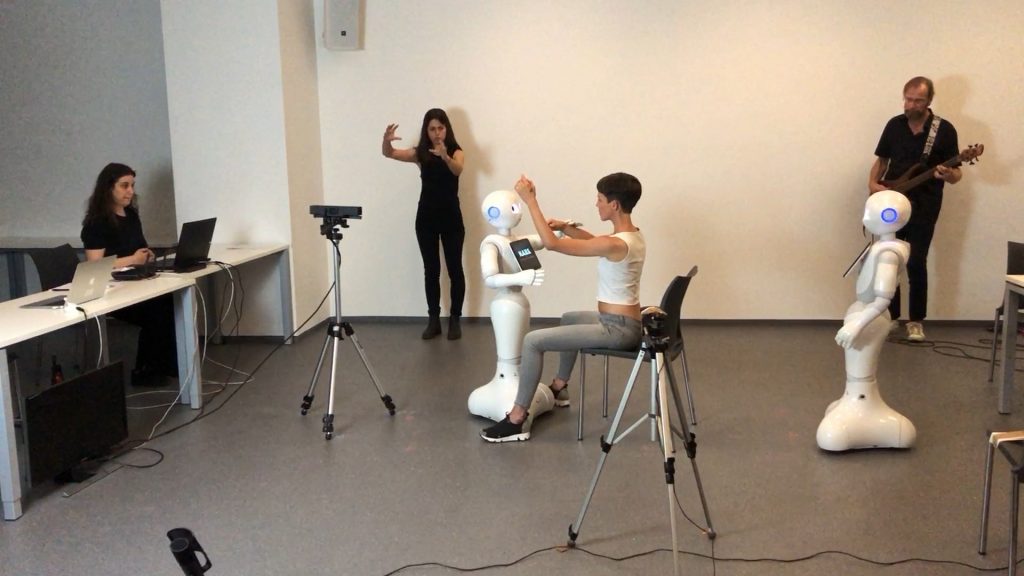

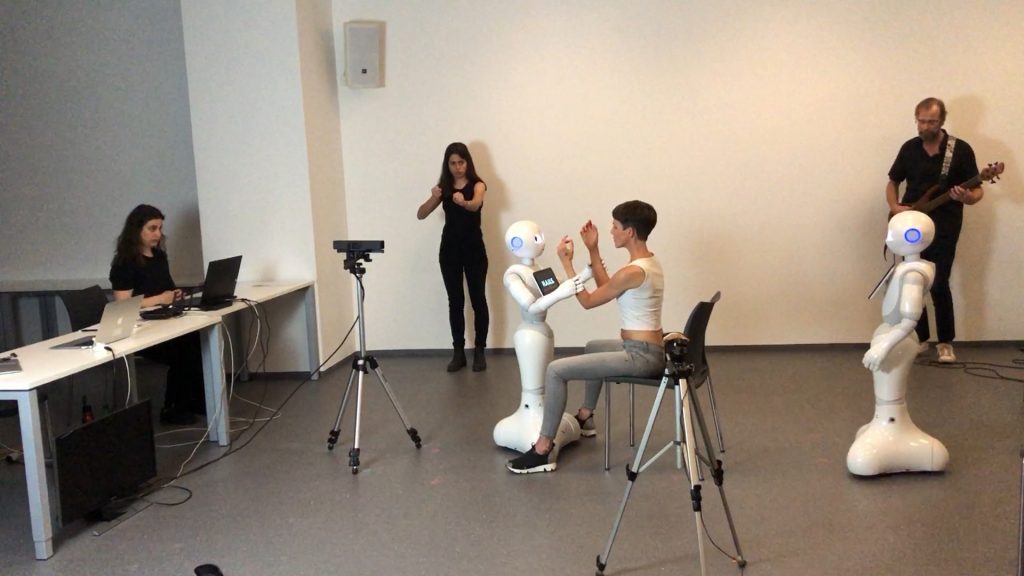
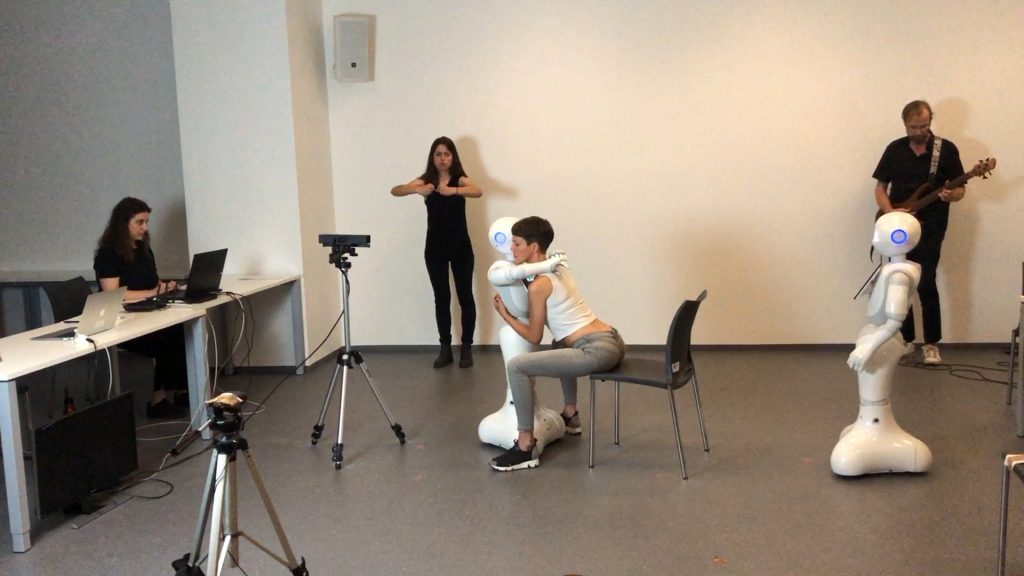
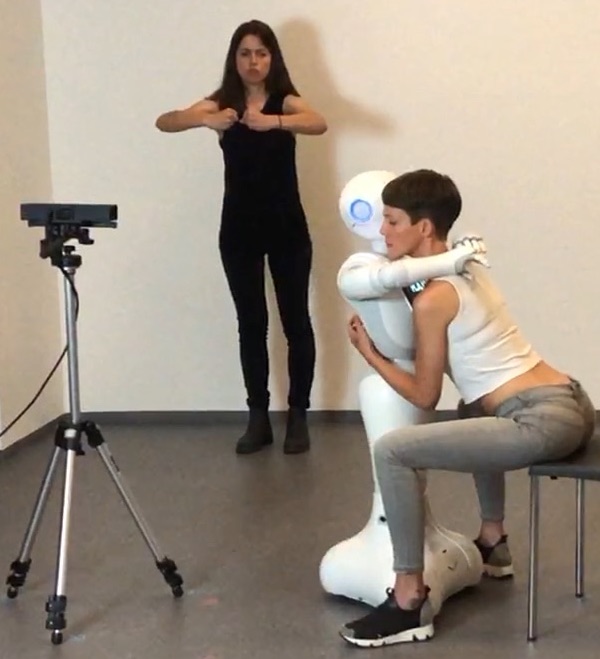
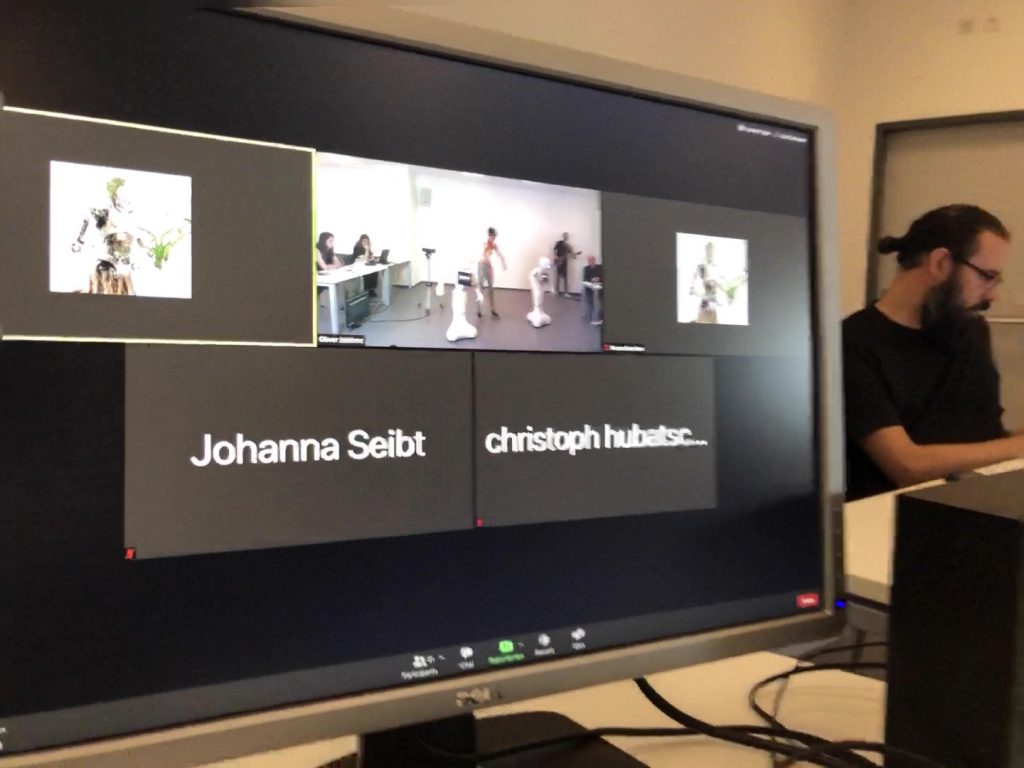
Workshop Procedure:
Participants are invited to express their interests in topics.
We will collect and cluster the topics sent, to build up 3 clearly differentiated topics for the workshop, which will ultimately lead to 3 scenes. At the workshop we will swiftly reflect on a topic with the audience. Dancer, robot, roboticists and musician will improvise a scene on the topic. This is immediately followed by a discussion of the audience’s considerations. We conclude the workshop with a discussion about the audience’s emotional impressions, insights and thoughts.
Examples for workshop topics:
Intimacy, human-humanoid confluence, to touch and being touched, touches with the face and in the face, mutual gaze, care work, induced changes in current human social practices and more detailed in human motion and behaviours, …
Body language, mimicry, motion similarity, range of motion, non-verbal communication, perception of human motion, movement coordination and synchronization, …
Culturalising of social robots, anthropomorphism, sociability with artefacts, physical proximity and distance, questions of agency or intentionality, privacy or fraternity with an ever networking artificial agent, …
Workshop organisation:
10min introduction
3 scenes improvised, each 30min (about 10min topic reflection and robot preparation, 10min dance improvisation by dancer and robot, 10min discussion)
20min concluding discussion
Duration 2h
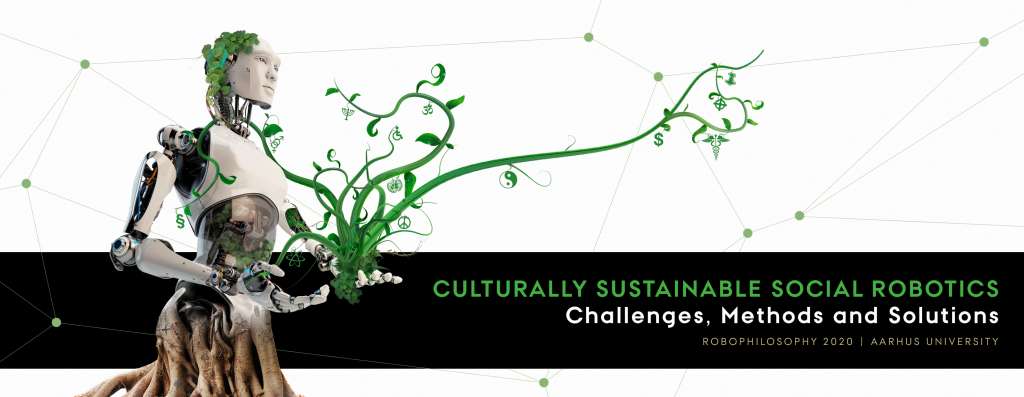
https://conferences.au.dk/robo-philosophy/aarhus2020/events/think-perform-tank/
Think & Perform Tank
Short description
experimental, transdisciplinary research on co-creation of sociocultural places and situations by interaction of dancer, musician, roboticists, robot, and the audience. Transformations triggered by robotic technologies are intended to lead to robot cultures. Actualised by their human-like shape, motions and behaviours social humanoid robots have the largest potential of cultural implications for an individual. Due to the pandemic with it’s plea for “social distancing” transformations started to develop towards negative cultural values for many. The workshop invites to explore/test behaviours of social and physical distance considering proxemics, kinesics, cloud-computing, situatedness, intimacy, privacy, and audience topics of human-robot relations.
Extended description
Robotic and artificial intelligent artefacts are continuously being introduced more and more into human everyday life. Those technologies are understood to be the core drivers in both “Industry 4.0”, the dominant trend in industrial production, as well as in the robotization of office/work and domestic environments. Robots and artificially intelligent technologies get bundled into all kinds of networked, artificial entities meant to be effective agents in complex physical and social surroundings. This may develop into robot cultures just like the industrial cultures of western societies turned towards service cultures a few decades ago.
Due to the pandemic, this development got a severe change in route with a new focus. Latest social developments plea for “social distancing” or even for a “zero-touch society.” While the consequent realisation of these social developments would result in unintended and negative cultural values for many people, it may at the same time accelerate the shift from service cultures to robot cultures – in which distance and untouchability among humans would get automatized – hence become entrenched in society. One of the coming challenges will be to avoid letting social distance become a new cultural value. But paradoxically, at the same time we are faced with the other challenge that calls to introduce robotic and artificial intelligent artefacts as social technologies to bridge social gaps.
Among robotic artefacts, social humanoid robots have the largest potential for cultural implications – actualised by their human-like shape, motions and behaviours.
While it is complicated for robots to move, orient and behave in the banal everyday, humans usually do it with ease. Today’s challenge is to continue sociocultural benevolent development of these technologies and their clustering into devices that allow cultural aspects with positive connotations to unfold.
At the workshop, the audience together with people from H.A.U.S. will translate some of the yet still abstract challenges of the upcoming of robot cultures into scenes that elicit certain behaviours yet to be invented. Behaviours that are supposed to address the two crucial questions stated by the conference: ”How can we create cultural dynamics with or through social robots that will not impact our value landscape negatively? How could we design human-robot interactions in ways that will positively cultivate the values we, or people anywhere, care about?”
We introduce a research method for Human-Robot interaction with dance performance as the epistemic object at its center. Since the beginning of the year the group is working with a new approach with human improvisation and robotic mimicry of human body language (original H.A.U.S. robotic technology). Research interest is focused on creation, co-creation and occupation of sociocultural places and what it entails to live and work in intimate proximity to the replica of a human being. This approach provides access and insights into aspects of interaction that would otherwise not be possible: For humans, these include projections, expectations, affect, emotions, introspection and presence, memory and knowledge. For humanoids, these include changing light and sound conditions, and keeping focus within groups of people, becoming understood by non-verbal language. For both entities it may turn out to develop stronger differentiation but, at the same time both develop behavioural as well as spatial hybrids.
We will have a humanoid robot at the workshop. There it gets confronted with thoughts of the audience and motions of a dancer. Members of he audience are asked to send their topics beforehand: research interests, discourse topics, questions or terms to be translated into interrelated human-humanoid behaviour, trivia, prototypical scenes of he everyday, sociocultural utopias and more. In that way, participants get involved in the development of three dance-performance scenes. We will cruise the network of influences between concept, choreography, dance, and robot programming to gain novel insights. These scenes get developed collectively from abstract thoughts, realised via dance choreography and robot programming.
Workshop by people from H.A.U.S.
Helena
Frijns,
Human-Robot Interaction researcher, programming and controlling our robots.
Christoph
Hubatschke,
Philosopher, guiding our discussions and interaction by caring for the chat.
Eva-Maria
Kraft,
Choreographer, Dancer.
Thomas
A. Pichler,
Musician playing Cellare,
Darja Stoeva,
Human-Robot Interaction researcher, programming and controlling our robots.
Oliver Schürer
Theorist
